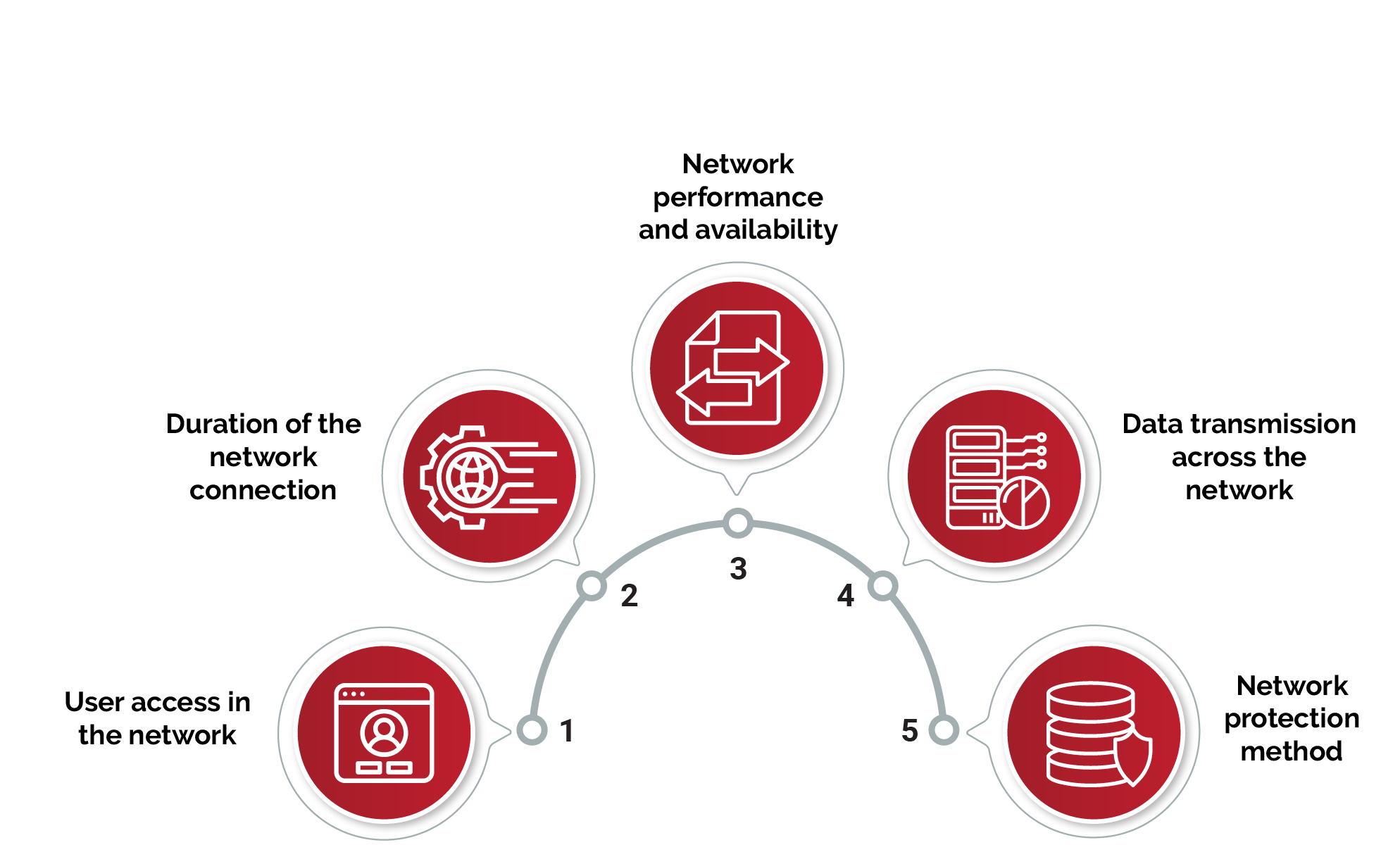What is Network Security?
The ISO/IEC 27033 series of standards consist of six parts designed to ensure network security of devices, applications, services, and end users. It covers securing communications between networks using security gateways, virtual private networks (VPNs), and wireless IP network access.
ISO/IEC 27033-1 is a mapping to the other parts. It provides an overview of the concepts and management guidance of network security by helping organizations identify and analyze network security risks and network security requirements.
ISO/IEC 27033-2 provides guideline on planning, designing, implementing, and documenting network security. It introduces the network security architecture, its requirements, and the design principles.
ISO/IEC 27033-3 illustrates network scenarios and their related threats, design techniques, and control issues. It helps organizations review technical security architecture, design, and security controls.
ISO/IEC 27033-4 provides guidelines on risks, design techniques, and controls of security gateways. It presents security gateways for securing information flows between networks.
ISO/IEC 27033-5 provides guidelines on risks, design techniques, and controls of virtual private networks (VPNs). It helps organizations select, implement, and monitor technical controls needed to connect remote users to networks.
ISO/IEC 27033-6 provides guidelines on risks, design techniques, and controls of IP wireless networks. It helps organizations select, implement, and monitor technical controls needed to secure communication between wireless networks. This part introduces wireless personal area networks (WPANs), wireless local area networks (WLANs), and wireless metropolitan area networks (WMAN).
Why is Network Security important for you?
A network is an essential component of the IT infrastructure which allows electronic communication and sharing of resources using network devices, protocols, services, interconnection, and infrastructure. Compromising any network infrastructure assets can lead to security and privacy breaches in communication.
Network security ensures the operation of the networks by protecting the network infrastructure and preserving confidentiality, integrity, and availability. An effective network security protects business processes.
The ISO/IEC 27033 series can help organizations plan, design, and implement network security by creating a secure environment and protecting virtual networks and physical devices, data, and proprietary information.
The Benefits of Network Security Certification
Top network characteristics that benefit from an ISO/IEC 27033 implementation

How to get started with this training?
The ISO/IEC 27033 series can help organizations plan, design, and implement network security by creating a secure environment and protecting virtual networks and physical devices, data, and proprietary information.
$ 1.100,00
What is Network Security?
The ISO/IEC 27033 series of standards consist of six parts designed to ensure network security of devices, applications, services, and end users. It covers securing communications between networks using security gateways, virtual private networks (VPNs), and wireless IP network access.
ISO/IEC 27033-1 is a mapping to the other parts. It provides an overview of the concepts and management guidance of network security by helping organizations identify and analyze network security risks and network security requirements.
ISO/IEC 27033-2 provides guideline on planning, designing, implementing, and documenting network security. It introduces the network security architecture, its requirements, and the design principles.
ISO/IEC 27033-3 illustrates network scenarios and their related threats, design techniques, and control issues. It helps organizations review technical security architecture, design, and security controls.
ISO/IEC 27033-4 provides guidelines on risks, design techniques, and controls of security gateways. It presents security gateways for securing information flows between networks.
ISO/IEC 27033-5 provides guidelines on risks, design techniques, and controls of virtual private networks (VPNs). It helps organizations select, implement, and monitor technical controls needed to connect remote users to networks.
ISO/IEC 27033-6 provides guidelines on risks, design techniques, and controls of IP wireless networks. It helps organizations select, implement, and monitor technical controls needed to secure communication between wireless networks. This part introduces wireless personal area networks (WPANs), wireless local area networks (WLANs), and wireless metropolitan area networks (WMAN).
Why is Network Security important for you?
A network is an essential component of the IT infrastructure which allows electronic communication and sharing of resources using network devices, protocols, services, interconnection, and infrastructure. Compromising any network infrastructure assets can lead to security and privacy breaches in communication.
Network security ensures the operation of the networks by protecting the network infrastructure and preserving confidentiality, integrity, and availability. An effective network security protects business processes.
The ISO/IEC 27033 series can help organizations plan, design, and implement network security by creating a secure environment and protecting virtual networks and physical devices, data, and proprietary information.
The Benefits of Network Security Certification
Top network characteristics that benefit from an ISO/IEC 27033 implementation

How to get started with this training?







